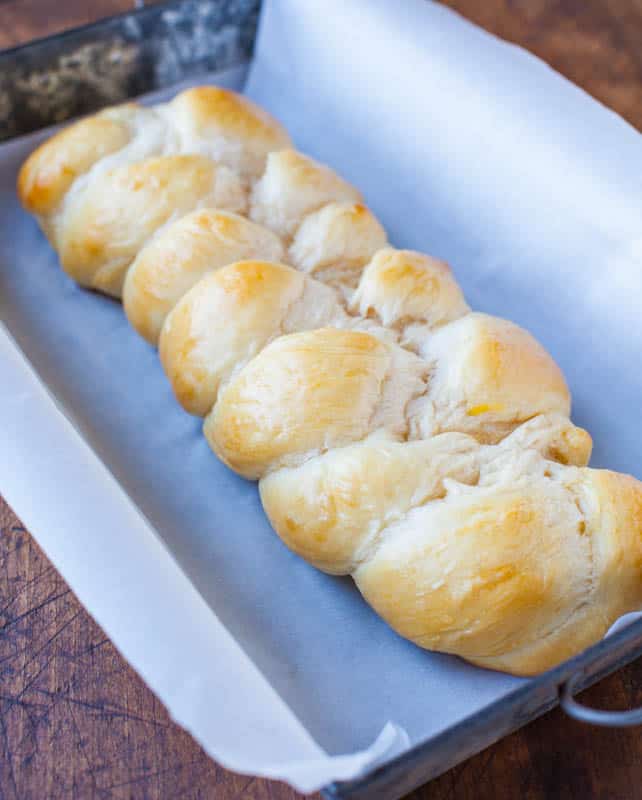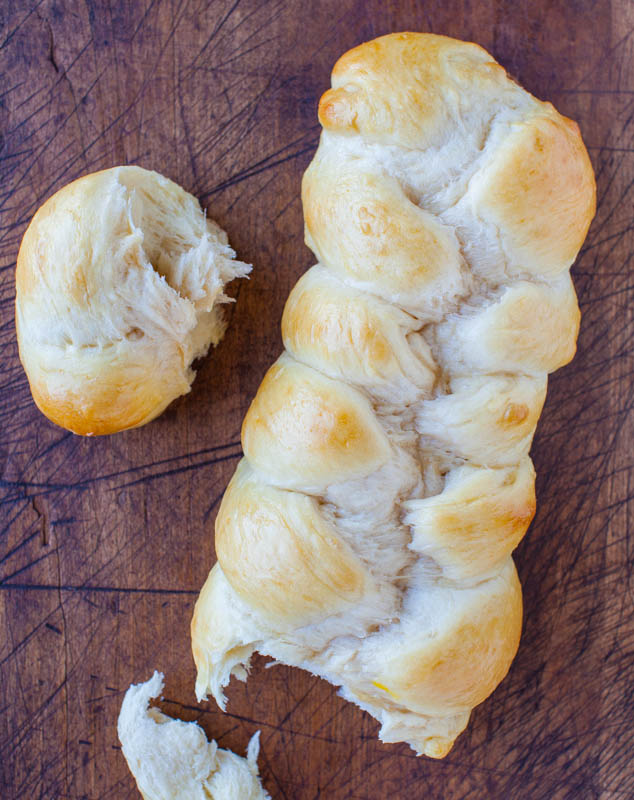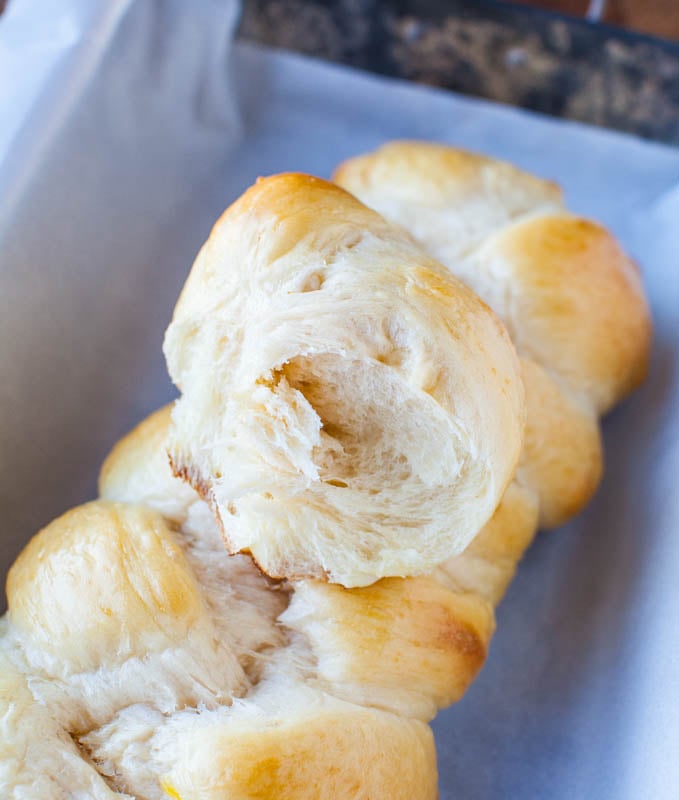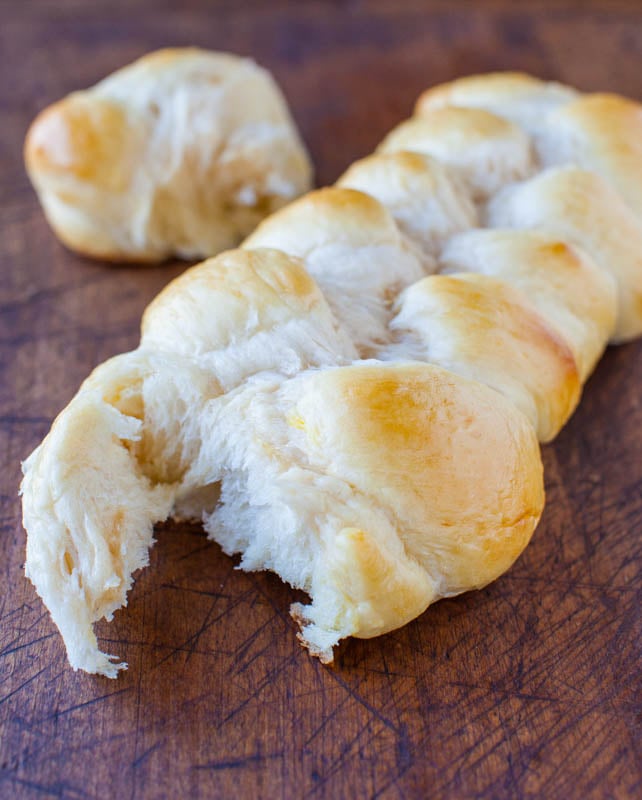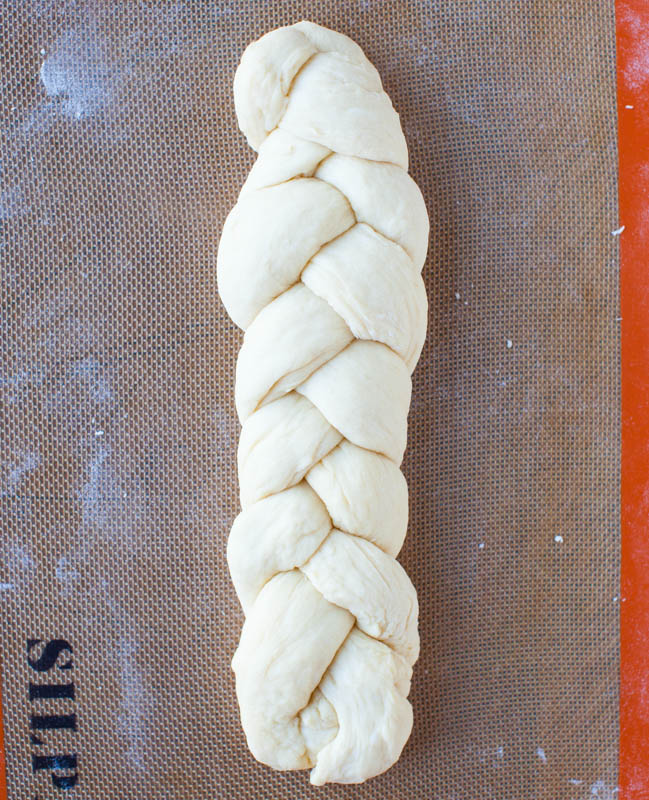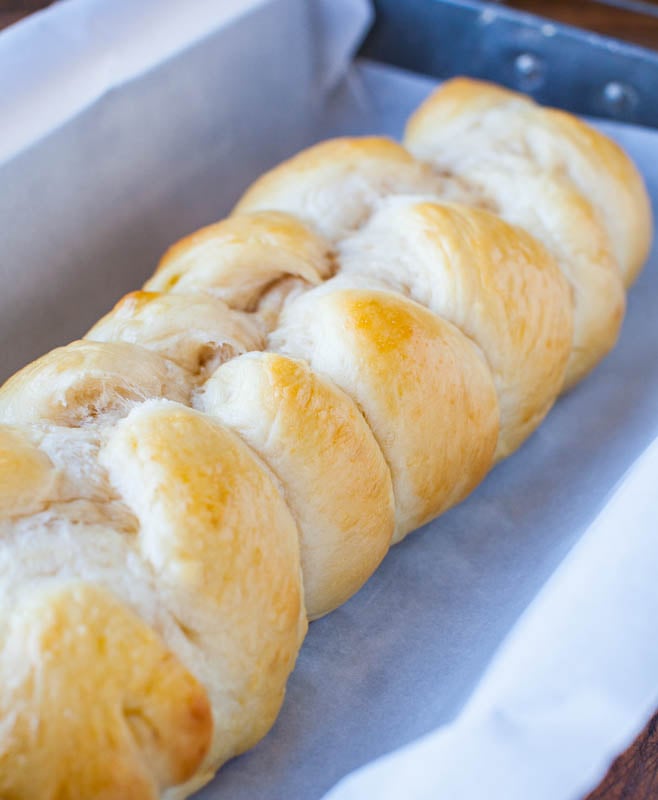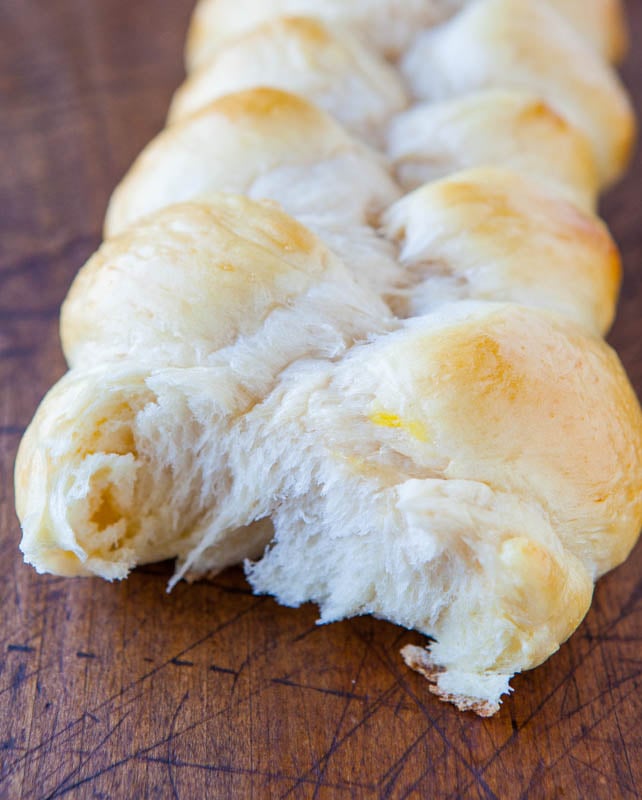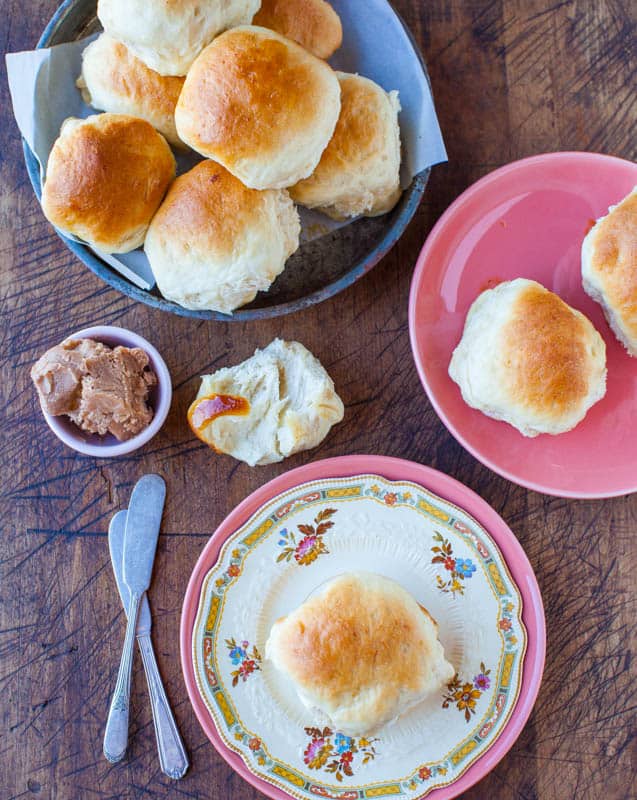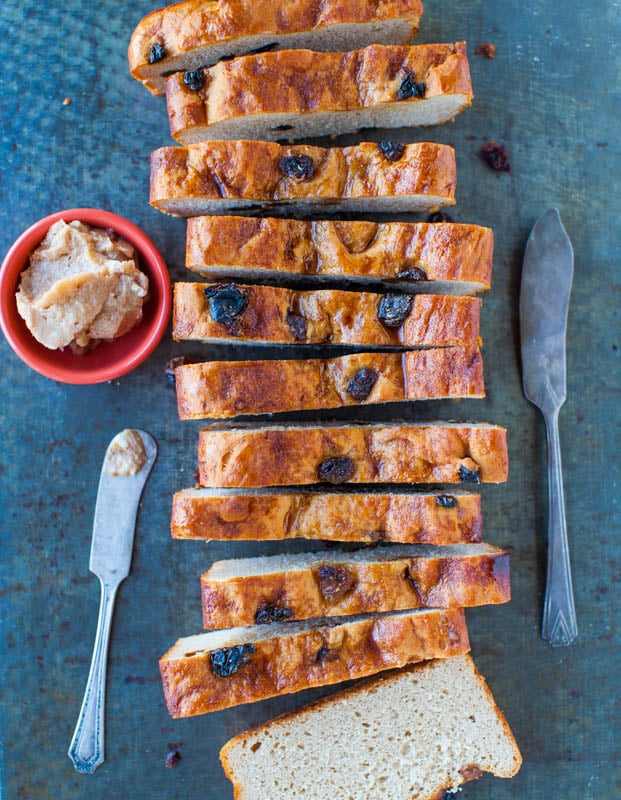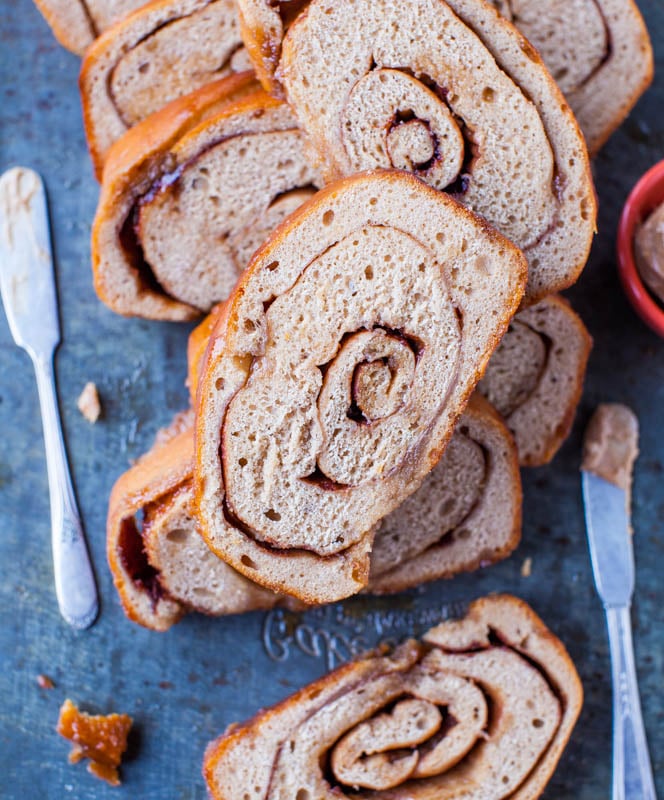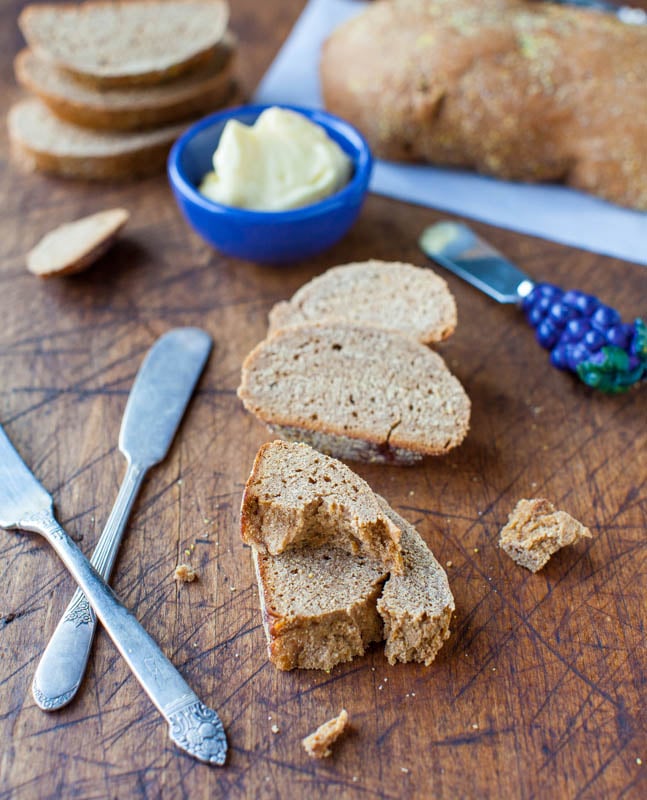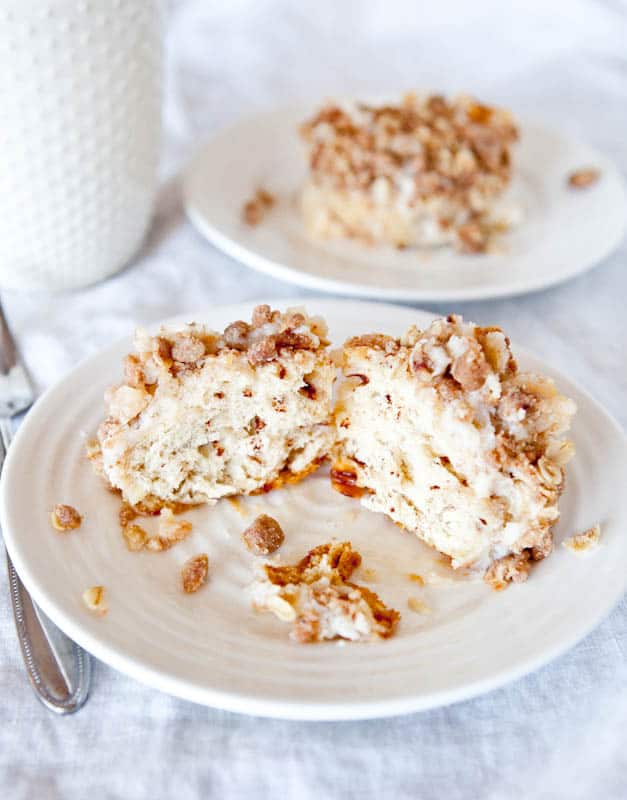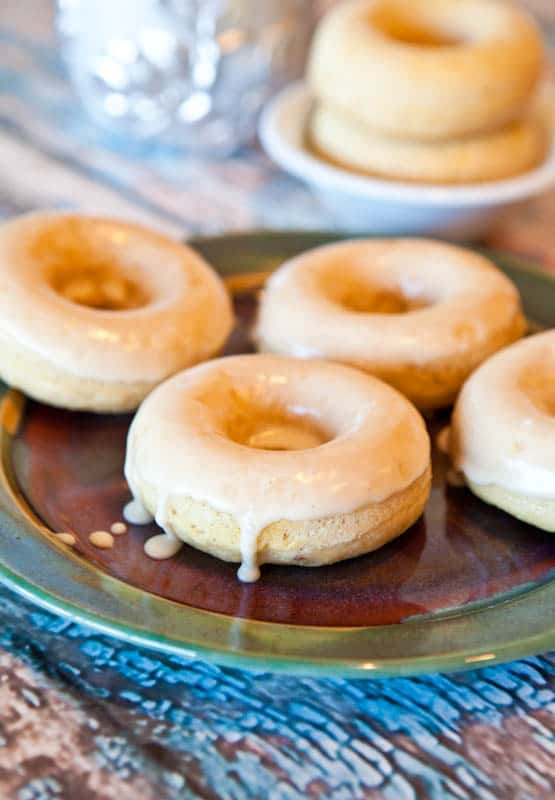This bread, and how easy it is to make, is too good to be true. And it earned me major points with my challah-loving husband. Bread karma has been on my side recently because for a first-ever attempt at making dinner rolls, I could not have been more pleased with the results and the recipe will likely be my go-to dinner roll recipe for years to come. The lucky streak continued because this challah is the first challah I’ve ever made and was positively blown away with the results and so was my Jewish husband. Not only did he tell me that it’s the best challah he’s ever had, and this is coming from a man who’s family owned a Jewish deli in Chicago, but of all the bread recipes I’ve made recently, he told me the challah is his favorite bread to date, even trumping the dinner rolls. Not bad for a shiksa.
I made the challah using the challah recipe found in the Artisan Bread in Five Minutes a Day: The Discovery That Revolutionizes Home Baking cookbook. The concept of the book is quite remarkable in that the authors set out to create bread recipes and a bread-making method that enables one to enjoy freshly bread daily, with just five minutes of active preparation. They wanted to make bread-making accessible and do-able, without any of the hassle, trouble, or labor-intensive challenges that are the common impediments to bread-baking at home. The overall concept is to make a large batch of dough that can be kept in the refrigerator for up to one week and when you’re ready for fresh bread, simply take a hunk of dough, shape it into a loaf or braid it, allow it to rise for just over an hour at room temperature, then bake it. The recipes are no-fuss and no-knead. Not having to knead dough is a huge bonus, because even with a stand mixer, kneading takes time. And for the novice bread-maker, or for those who are hand-kneading, knowing if the dough has been properly kneaded or if you’ve needed long enough, can be challenging to determine and having recipes that are no-knead is very welcome.
I cannot speak for other recipes yet because so far all I’ve made from the book has been the challah, but the book has earned it’s keep and is a five-star smashing success based on the challah recipe alone. Not only is the challah the best we’ve ever had, but I have learned so much about the authors’ methodology to bread-making; how yeast works on the moist doughs, why the dough doesn’t require kneading, and the various concepts and techniques advocated in the book. It’s one of those life-changing books and although that sounds a bit dramatic, now that I can make fabulous tasting bread at home daily, with almost no effort, is indeed pretty life-changing.
Almost all recipes in the book can very easily be doubled or halved, and I chose to halve the challah recipe. This produces dough for two loaves of challah, one that can be baked immediately and one that can be baked off within the next week, a perfect quantity for our family. To make the challah, combine water, yeast, honey, oil, salt and flour in a mixer or large bowl. The authors give a choice of using butter or oil and I chose oil because oil-based challah is softer than butter-based. I used a combination of bread and all-purpose flour. The authors indicate in the opening section of the book that all-purpose flour is just fine for almost all of their recipes, but that bread flour may be substituted if a chewier texture is preferred. I love chewy bread and opted to use some bread flour in conjunction with all-purpose. After all the ingredients are added to the bowl, mix until the dough just combines, shutting off the mixer or stopping hand-mixing before moving into actively kneading the dough. At this point the dough is pretty wet and sloppy, but it’s by design. Cover the bowl and allow the dough to rise until it’s doubled in size, about two hours. At this point, you can either go onto the next step, which is rolling out or braiding the dough in preparation to be baked; or take the whole wad of dough and refrigerate it and bake it off within five days for egg-enriched doughs, and seven to ten days later for other dough. I used half of the dough and baked some challah immediately, and refrigerated the other half for challah I baked five days later.
For the bread I was baking immediately, I separated the dough into three pieces, rolled each piece into a long cylinder about a foot in length, and then braided it with a three-strand braid, just like braiding hair. There are some incredibly complex ways to bread challah, with six-stranded braids, flipping it over, twisting and turning it like oragami, but I kept things very basic for my first attempt. I braided it on a Silpat Non-Stick Baking Mat, which is nice because very little flour is needed for the work surface, and the less flour you add to bread dough, the softer and lighter the resulting bread is. After it’s braided, the dough rises for forty minutes if using freshly made dough; or if using previously refrigerated dough, this second rise is for one hour and twenty minutes. Immediately before baking, brush the dough lightly with eggwash. I used about half of one beaten egg for the eggwash and didn’t over-do it because I didn’t want the bread to either taste too egg-ey or turn too browned in the oven, both of which can happen with eggwash. The bread bakes up quickly, in about twenty minutes, so watch it carefully so it doesn’t burn.
I cannot speak highly enough about this bread. It’s light, soft, tender, and almost croissant-like in how delicate and fluffy it is. It has a butter-like quality, even though I didn’t use butter in the dough and chose to use oil instead. It doesn’t even need to be buttered to enjoy it and it has a light sweetness from the honey. It stayed fresh for days wrapped in plasticwarp and placed in a gallon-sized ziplock. The loaf I baked five days later with refrigerated dough tasted exactly the same as the first; absolutely perfect. Although the authors suggest that refrigerated dough can take on an almost sourdough-like quality as the yeast ferments over time, I didn’t sense any changes to the taste of the bread from the dough that I baked immediately versus that which I waited to bake. This could be because it’s an egg-enriched dough and a sweeter dough compared to other doughs. It really was too good to be true when I braided five day old refrigerated bread dough that I didn’t ever have to knead, let it rise for an hour and half, and baked it. Pulling apart a braid never tasted so good.
Related Recipes:
Honey Dinner Rolls – Soft, light, fluffy, tender, moist and the dough has just enough chew to really sink my teeth into. They’re the absolute best dinner rolls I’ve ever had and were an ultimate hit with the family. I will make this recipe over and over, forever and I highly recommend these for Thanksgiving or any holiday gatherings Tried this recipe? Leave a review! Consider leaving a 5 star rating if you’ve made and loved one of my recipes!
Cinnamon Raisin English Muffin Bread with Cinnamon Sugar Butter – If you’ve never made bread before, this is a goofproof, foolproof, no-knead recipe that’s perfect for the first-time bread maker. You’ll never have a need for storebought English muffins again, especially because this bread is spiked with cinnamon-sugar and raisins
Cinnamon Swirl Bread – As close to a cinnamon roll as a bread can get and still be called bread rather than dessert. Rich, sweet, and light. This bread is for the cinnamon lover’s and is abundantly flavored with cinnamon, which is used twice in the bread recipe, and again in the cinnamon-sugar butter I serve it with
Outback Steakhouse Wheat Bread {Copycat Recipe} – This recipe is based on my love of Outback’s bread and makes two small loaves of hearty, dense, wheat bread. The bread is ever-so-slightly sweetened and is infused with subtle hints of molasses, and a dead-ringer in the flavor department. Serve with honey butter for even more authenticity
Cinnamon Bun Pie – Best cinnamon rolls I’ve ever made (to date) and they’re ready from start to finish in less than 30 minutes because they use a shortcut. I’m working on yeast-based cinnamon rolls next
Baked Vanilla Donuts with Vanilla Glaze – No-yeast baked donuts that are as easy as making muffins and if you don’t have a donut pan, the batter can be baked as muffins
Have you tried any Artisan Bread in Five Minutes a Day recipes? There are three books: Artisan Bread in Five Minutes a Day: The Discovery That Revolutionizes Home Baking (2007), which is the one I bought Healthy Bread in Five Minutes a Day: 100 New Recipes Featuring Whole Grains, Fruits, Vegetables, and Gluten-Free Ingredients (2009) Artisan Pizza and Flatbread in Five Minutes a Day (2011) If you’ve tried any recipes that you love, I’d love to hear about them and your favorites. Have you ever made challah? If you’ve never made bread, or challah, there’s no reason to be intimidated because neither the bread-making nor the braiding is challenging and the bread is scrumptious. Everyone says that challah makes the best French toast but I normally think of the bread used for French toast as the bread that’s a little past its prime and that you need to use up. This challah was so light, flaky, moist, tender and croissant-like that we had to restrain from inhaling the loaf in sitting. No need for butter, jam, honey, or anything and it was that good on it’s own. Maybe one day we’ll have extra for French toast.
